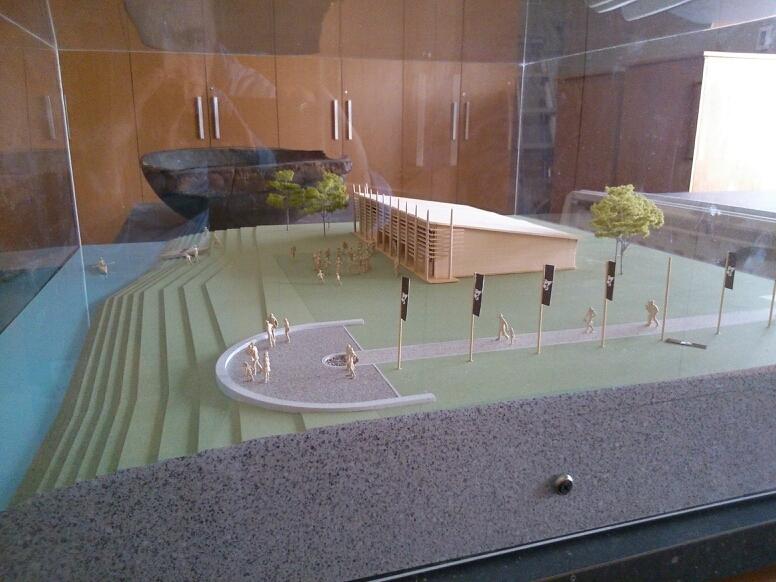By Nadine Moedt (The Cascade) – Email
Print Edition: March 19, 2014

A medley of UFV anthropology students and Langley locals were invited to a presentation in the new Kwantlen Longhouse Cultural Center in Fort Langley on March 14, where artist Brandon Gabriel and UFV instructor Douglas Hudson made presentations on indigenous art and archeology.
The group toured the longhouse and took part in traditional Sto:lo songs and drumming. The Longhouse, built entirely of western red cedar, opened in 2013.
Gabriel welcomed the group as the first guests outside of the Kwantlen community, and described the significance of its place in relation to Fort Langley.
Fort Langley was the first post set up by Hudson’s Bay Company in B.C. in 1827. The heritage town now celebrates this history. Kwantlen peoples, however, see the milestone differently, according to Gabriel.
“This idea that the settlers, the colonial people, came here, were coming to a land that was devoid of people and culture, was not true,” he said. “We were a big strong presence.”
A massive usurping of land and the disenfranchisement of Kwantlen peoples followed. The land was sold off in parcels in the form of the communities we see today.
The presence of the new longhouse comes as a symbol of the spirit of the Kwantlen peoples.
“It speaks volumes,” Gabriel said. “It speaks to the resilience of our people, the desire for us to continue on with our culture, despite the many adverse effects that the Canadian government put on our people.”
Gabriel, who is a renowned Coast Salish artist with art exhibited around the world, gave a presentation on First Nations art and perspectives. He spoke on the importance of language and the oral tradition of First Nations people. Despite not having the Western tradition of a written culture, First Nations peoples had a complex, unique language and means of preserving memory.
Early petroglyphs (pictogram engravings on rock) detailed “life as it was happening” over 500 years ago.
“Art is as much about the human journey as itself,” Gabriel said. “We study and map human history through art.”
A main topic of discussion was the repatriation of artifacts taken from First Nations peoples throughout the history of Canada. According to Gabriel, First Nations artifacts from British Columbia are second in number only to Egyptian artifacts held by museums. Most of these were taken without the permission of the people they belonged to. Now, there is no system in place to return the stolen art.
Reclaiming these items is a difficult process. The identities of the artifact owners were never documented meaning relatives are not able to prove their direct ancestry and therefore can’t reclaim items that belong to their family.
Gabriel also spoke of criticism many indigenous artists face when it comes to creating modern works. Indigenous art has been relegated to the past, and must conform to idealistic expectations of what “Indian” art should look like.
This expectation is seen in the mass production and imitation of First Nations art.
“The sacredness has been lost in the quantification of the art form,” Gabriel said.

